Week 9: Environment, Health, Equity and Justice
1/32
There's no tags or description
Looks like no tags are added yet.
Name | Mastery | Learn | Test | Matching | Spaced |
|---|
No study sessions yet.
33 Terms
What is environmental justice?
Environmental justice is the fair treatment and meaningful involvement of all people, regardless of race, color, national origin, or income, in environmental laws, regulations, and policies. It seeks to ensure that everyone enjoys a healthy environment and is not disproportionately affected by environmental hazards.
most disadvantaged are least exposed
general definition of environmental definition
general term, most used, more political than “environmental equity”, born in USA
emphasis is on remedial action to correct inequities
arose out of environmental racism movement
Principles of environmental justice
protection from environmental degradation
prevention of adverse health effects
culpability – ability to hold polluters responsible
reverse burden of proof – guilty until proven innocent
remedial action – in cases of identified injustice
recognition of relevant groups in processes, remediation, benefits
environmental equity
fair sharing of benefits (“goods”) and burdens (“bads”) of production
two forms
equal sharing (typical)
sharing proportio
3 dimensions of environmental justice
Procedural justice
Distributive justice
Recognition justice

Procedural Justice
fair participation in due process
emphasis on causal mechanisms for inequitable outcomes
extent to which governmental rules/regulations, enforcement, treaties, and sanctions applied in a nondiscriminatory way
e.g., environmental assessment process
should involve appropriate communities

distributive (outcome) justice
distribution of benefits (goods) and burdens (bads)
spatial statistics involved
temporal (generational equity)
often very simple analysis

recognition justice (newest type)
status afforded groups within systems of power/control
involve those directly impacted
race, gender, ethnicity
E.g., Indigenous groups and activities on traditional territories
highly linked to procedural justice

Social Equity
underpins environmental equity and justice
social and economic factors that typically coincide with environmental equity issues
e.g., class, race, gender, political power
often environmental equity solutions are social equity solutions (e.g., income assistance)
Environmental justice - Context
1970s-80s environmental movement and civil rights movement “merged” – pressure on US federal government – emphasis on waste
1990 USEPA – Environmental Equity Workgroup
1992 – EEW report released – inequities exist
1994 Clinton – Executive Order – address human health and environmental effects of all federal agency programs
“National Strategy Respecting Environmental Racism and Environmental Justice”
passed in Canada in 2024
Declining sex ration in Aamjiwnaang First Nation community near Sarnia, Ontario – benzene contamination likely culprit
benzene emissions linked to declining number of boys in the community
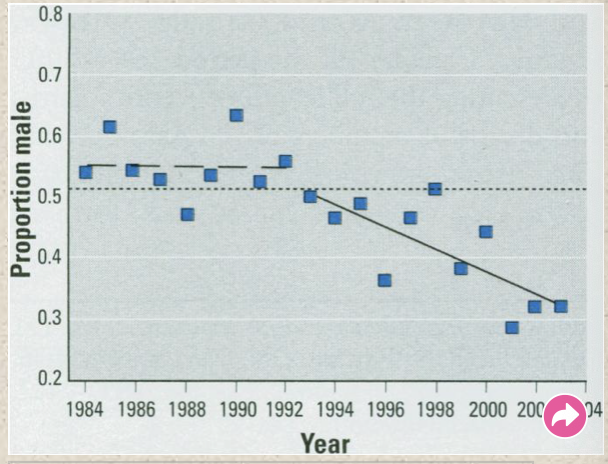
Research issues for assessing outcome justice
Environmental threat
often single exposure type (e.g., MSW)
increasing emphasis on multi-exposure (Camden?)
distance - plume modeling, wind direction etc rare
Geographic scale/unit
this has proven critical, results often flip flop depending on scale
e.g., census tract, dissemination area (enumeration area), county
subpopulation
race, ethnicity, income, gender, age
beware of homogeneity of local populations such that true positives may be masked
e.g., study in the South US only, potential false negatives high proportion people of colour
time
most studies cross-sectional
more longitudinal research needed
Outcome is equitable if:
Hazardous sites are located in disadvantaged communities no more frequently than other communities
Implications?
Early Evidence for Distributive (In)justice
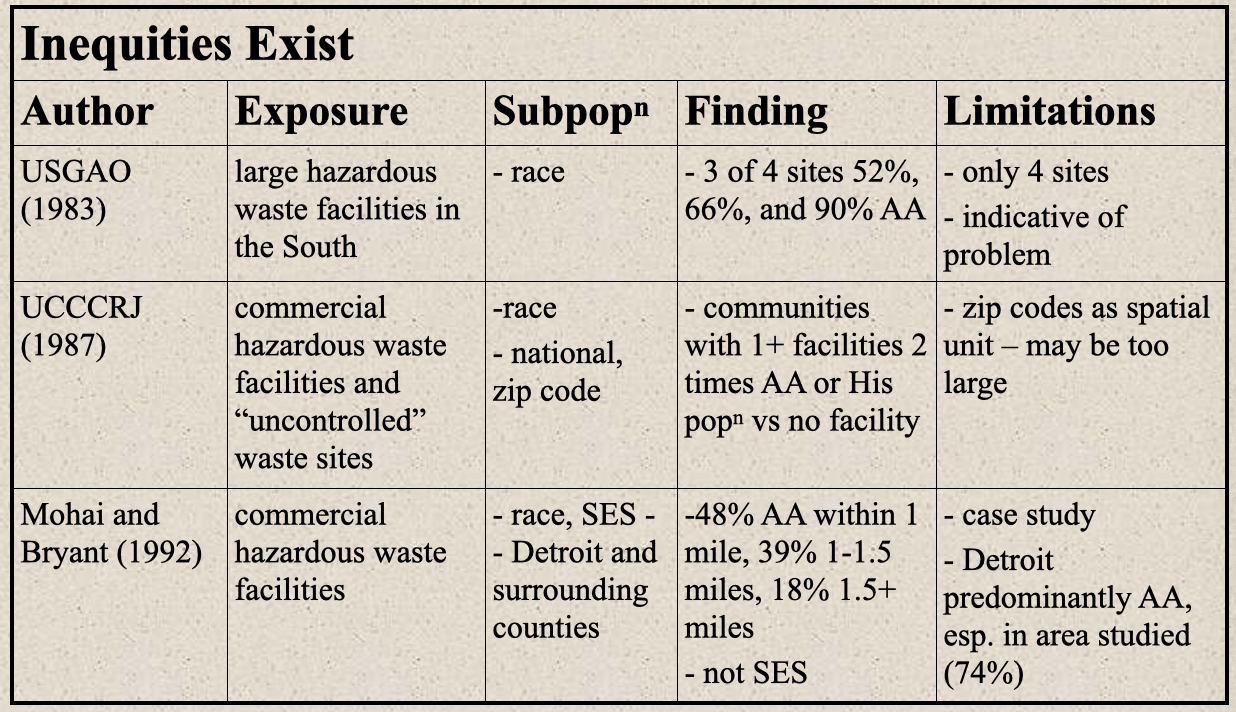
Evidence for distributive (in)justice

Evidence for distributive (in)justice

Inequity exists… sometimes
differences not as predicted for AA, yes for dwelling value, almost for His %
Controls: industrial employment, employment %, older dwelling also significant ; % male employed opposite of predicted
for exam: Know patterns of studies, how some studies are biased etc.
main study about environmental justice: Anderton
know that studies flip/flop between
measuring exposure is key, GIS helps!
proportional assignment through buffering
80% = 0.8 of a facility; 20% = 0.2 of a facility
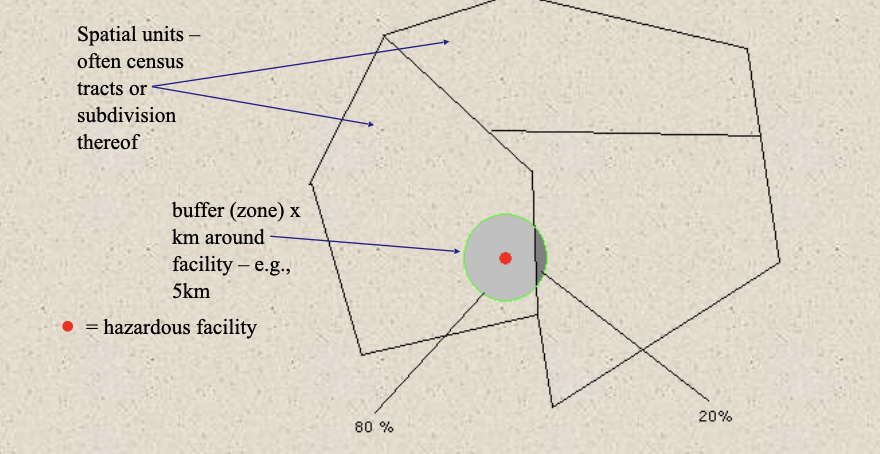
Which came first, disadvantaged or the facility?
only two significant, and in the opposite direction expected (South Carolina, TRI)
these two are actually working against the hypothesis
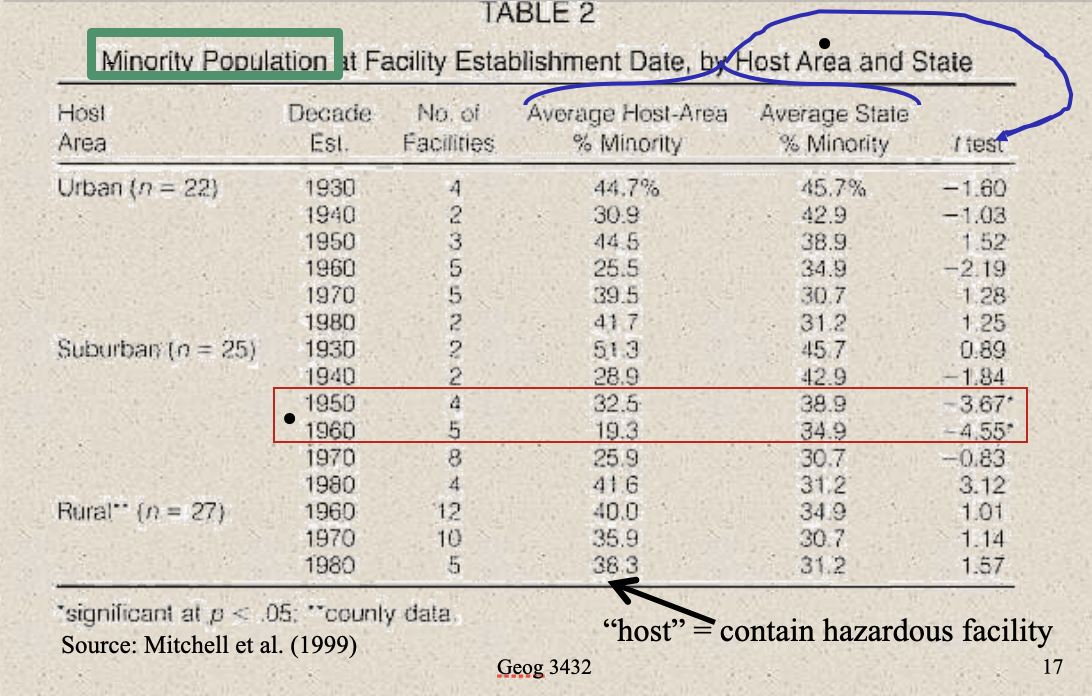
Does it even matter which came first if the resultant pattern is inequitable?
Canadian example: dose-response relationship (Hamilton)
lower SES = more suspended particulates
higher SES = less
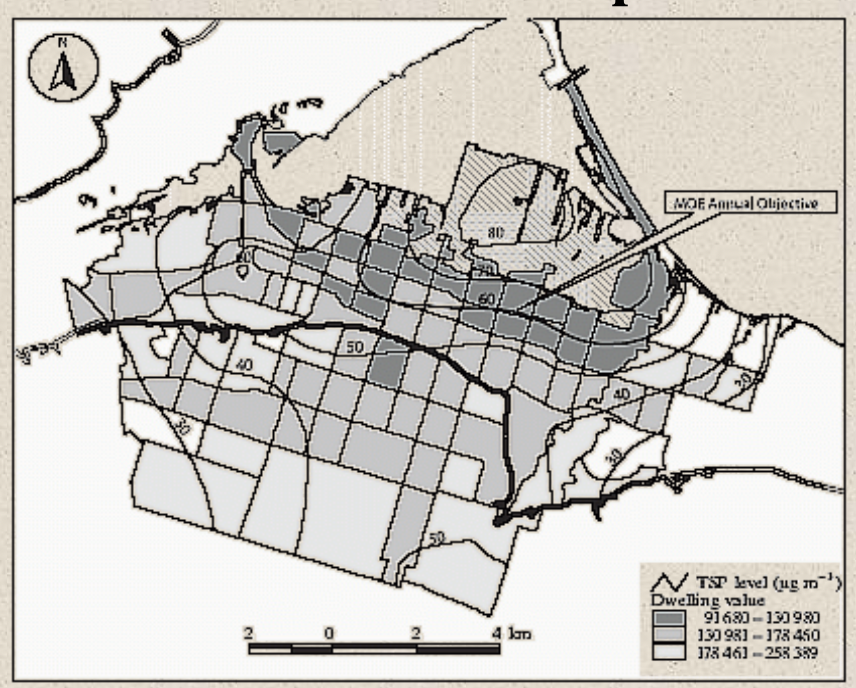
Linear regression vs comparison of means test
Linear regression is important because it contains other variables
gender, age, income, smoking
all included as control variables
Modelling
Jerrett et al (2001)
air quality, exposure measure through local monitoring stations NOT “on/off” exposure or relying on distance from facility!
SES inequities as predicted
how you model matters…somewhat:
SAR drops low income and adds unemployment
dwelling value most consistent predictor (more stable than income as a measure of SES)
Ethnicity and pollution in Hamilton

Procedural Justice
far fewer studies of procedural environmental justice
What types of research methods might be used to assess procedural justice?

Procedural justice
whether or not you have access to decision making
What constitutes “just”?
Is it procedurally just if:
all qualifying sites have equal chance of being selected
AND/OR
some acceptable amount of benefit accrues to local community
AND/OR
“outcome” is equitably “distributed”?
Procedural justice and scale
Is this not in my back yard (NIMBY)?
process of opposition whereby facilities are placed where resistance is least – often disadvantaged
Lincolnville Nova Scotia
Underground railroad: Activists who helped black slaves escape from the US and settle in Canada (Nova Scotia)
1st generational vs 2nd generational landfills
1st: no liner, old school landfill, no attempts to catch leachate, more problematic
2nd: liner, modern landfill
Is this not in my back yard (NIMBY)? Or No opportunity to say, “no”?
Triple Jeopardy for the disadvantages
increased risks from social and behavioural determinants of health (e.g. smoking);
higher risks from high ambient pollution exposure;
an effect modification that makes exposure to ambient pollutants exert disproportionately large health effects on them compared with advantaged groups.
Addressing Inequities
To what extent should concerns about environmental equity/justice guide environmental (or other) policy?
How might we address the issue of environmental equity/justice in policy at all three levels (national, state/provincial, municipal)?